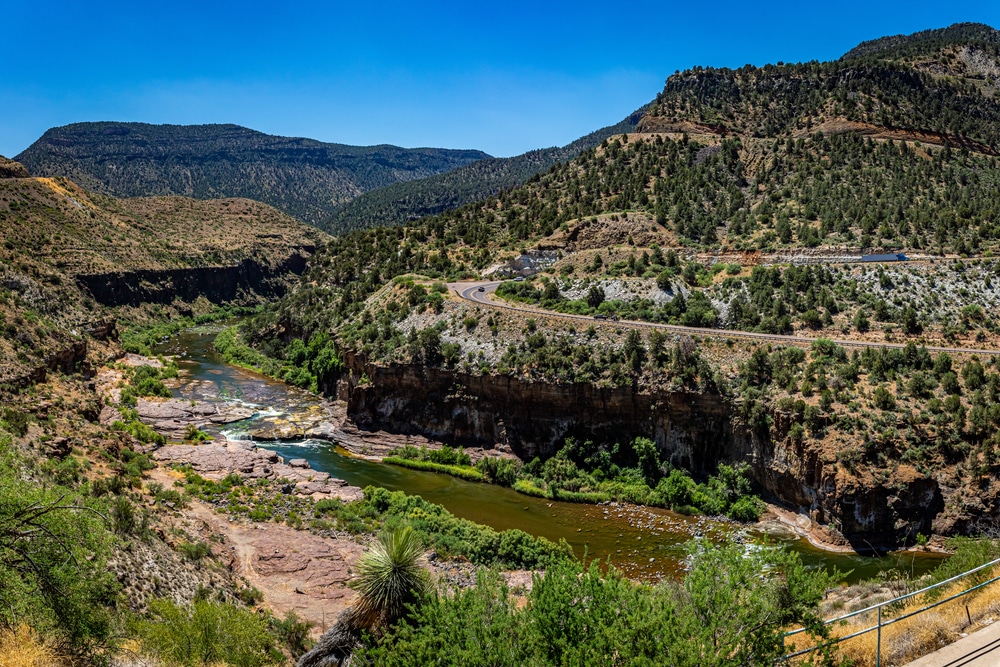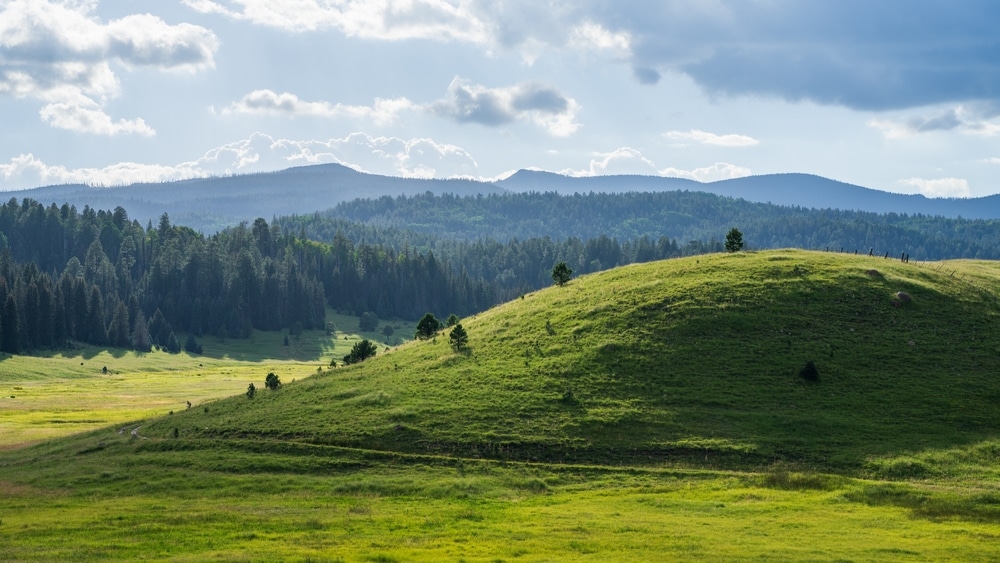Eastern Arizona represents one of the Southwest’s most captivating yet overlooked treasures—a land where rugged mountain ranges rise dramatically from desert floors, where the Colorado River and its tributaries carve ancient pathways through stunning landscapes, and where thousands of years of human history unfold across a backdrop of extraordinary natural beauty.
This remarkable region stretches from the pine-covered Mogollon Rim in the north to the Sonoran Desert’s northern reaches in the south, encompassing dramatic elevation changes that create distinct ecological zones and climate variations. Here, you’ll find cool alpine forests giving way to high desert plateaus before descending into mineral-rich lowlands—each area boasting its own unique character.


The story of Eastern Arizona begins with Indigenous peoples—the Apache, Navajo, and ancestral Puebloan cultures—who developed sophisticated societies adapted perfectly to these diverse environments. Spanish explorers arrived in the 16th century, followed by Mexican settlers, and later American pioneers who established mining operations, ranches, and farming communities. This layered history created the rich cultural tapestry visible throughout the region today.
What was once primarily mining and ranching territory has evolved into a diverse economic landscape. While agriculture remains important in river valleys, tourism has grown significantly as visitors discover the region’s natural wonders. Renewable energy development and innovative desert agriculture represent Eastern Arizona’s forward-looking approach to sustainable development.
The communities of Eastern Arizona embody a distinctive blend of Native American traditions, Hispanic influences, pioneer resilience, and modern innovation. From historic mining towns to agricultural communities to outdoor recreation hubs, each settlement offers its own chapter in the larger story of how humans have adapted to and thrived in this challenging yet rewarding landscape.
Eastern Arizona showcases some of the Southwest’s most dramatic geological features. The region is defined by the towering Mogollon Rim—a 200-mile escarpment rising 2,000 feet and marking the southern edge of the Colorado Plateau. This impressive feature creates a natural boundary between the highland forests and the lower desert regions.
The Salt River and Gila River watersheds carve spectacular canyons through the landscape, while the White Mountains rise to elevations exceeding 11,000 feet, creating alpine environments that contrast sharply with the desert terrain just miles away. Roosevelt Lake, San Carlos Lake, and other reservoirs not only provide essential water resources but also create unexpected oases in the arid landscape.
The region’s biodiversity is equally impressive, with distinct ecological zones supporting everything from ponderosa pine forests to desert scrubland. Wildlife enthusiasts can spot elk, black bear, and bald eagles in the highlands, while desert areas host javelina, coyotes, and a remarkable variety of reptiles adapted to extreme conditions.
Protected natural areas abound, including portions of Apache-Sitgreaves National Forests, the rugged wilderness of the Superstition Mountains, and the unexpected riparian habitats along the region’s waterways. These preserved landscapes offer opportunities to experience the raw beauty that has defined Eastern Arizona for millennia.
Eastern Arizona’s human history spans thousands of years, beginning with ancient cultures that left behind remarkable cliff dwellings, petroglyphs, and pottery still visible today. The Apache and Navajo nations established deep connections to this land, developing cultures uniquely adapted to its challenges and opportunities.
Spanish explorers traversed the region in search of gold, establishing routes that would later become important transportation corridors. The mid-19th century brought American settlement, with mining operations, military outposts, and ranching operations reshaping the landscape. Historic trails like the Coronado Trail (now US Route 191) followed ancient pathways that connected disparate communities.
This multilayered history created a cultural fusion evident in everything from local cuisine to architecture. Historic districts in communities like Globe, Miami, and Clifton preserve the region’s mining heritage, while Native American influences remain strong throughout the area. Hispanic traditions blend seamlessly with pioneer customs, creating cultural expressions unique to Eastern Arizona.
Annual events like rodeos, county fairs, and cultural festivals celebrate this diverse heritage, while museums and historical societies work diligently to preserve the stories that shaped the region. From ancient petroglyphs to Victorian-era buildings to mid-century diners, Eastern Arizona offers a journey through distinct chapters of Southwestern history.
Eastern Arizona offers an outdoor playground for adventure seekers of all kinds. The region’s waterways provide exceptional recreation opportunities, from kayaking the Salt River to fishing in high mountain streams to boating on Roosevelt Lake. These water features create refreshing escapes from the desert heat and attract visitors year-round.
Land-based activities are equally diverse. The White Mountains feature hundreds of miles of hiking trails, while the desert regions offer world-class rock climbing, mountain biking, and off-roading opportunities. The Arizona Trail passes through the heart of the region, attracting long-distance hikers exploring the state from border to border.
Those seeking less strenuous experiences can enjoy some of Arizona’s most scenic drives, including the breathtaking Coronado Trail and the Salt River Canyon route. Wildlife viewing opportunities abound, from bird watching along riparian corridors to spotting desert wildlife in their native habitats.
Seasonal variations create year-round recreational possibilities. Winter brings snow to the White Mountains for skiing and snowboarding, while fall transforms high-elevation forests with brilliant colors. Spring wildflower blooms carpet desert landscapes, and summer evenings offer perfect stargazing conditions in areas with minimal light pollution.
Despite challenging conditions, Eastern Arizona has developed remarkable agricultural productivity. River valleys along the Gila and Salt Rivers support productive farming operations that have adapted traditional techniques to the unique desert environment. Innovative irrigation systems, some based on ancient Native techniques, maximize limited water resources.
The region has become a laboratory for desert agriculture innovation, with drought-resistant crops and water conservation techniques that serve as models for sustainable farming in arid regions worldwide. From traditional staples like cotton and alfalfa to newer specialty crops, Eastern Arizona’s agricultural output continues to evolve.
Renewable energy represents another area of innovation, with solar developments taking advantage of the region’s abundant sunshine. These projects represent both economic development opportunities and a commitment to sustainability in a region where natural resource management has always been essential for survival.
Communities throughout Eastern Arizona demonstrate creative approaches to desert living, from passive solar home design to water harvesting systems to xeriscape landscaping. These adaptations reflect the region’s long history of human ingenuity in the face of environmental challenges.
Eastern Arizona encompasses a collection of communities, each with its own unique character yet connected by shared regional identity:
Each community offers its own chapter in Eastern Arizona’s story, from mountaintop escapes to river valley settlements to historic mining centers. Explore their individual pages to discover the distinctive character and attractions each has to offer.
Eastern Arizona rewards visitors throughout the year, with each season offering its own distinctive experiences. Summer brings cool relief in the high country, while the lower elevations shine during spring and fall with mild temperatures perfect for exploration. Winter offers snowy mountain recreation while desert areas remain accessible and pleasant.
The region’s geography creates significant travel considerations. The mountainous terrain means distances can take longer to traverse than map mileage might suggest. Major routes include US-60, US-70, and US-191, with the latter offering one of America’s most scenic drives through the Coronado Trail section.
Services vary throughout the region, with larger communities like Payson, Globe, and Safford offering full amenities, while smaller settlements might have limited options. Cell service can be spotty in remote areas, so downloading maps in advance is recommended for wilderness exploration.
First-time visitors often choose between two regional approaches: the Rim Country and White Mountains circuit in the north, or the mining communities and Gila Valley explorations in the south. Those with more time can connect these experiences via the spectacular Salt River Canyon drive, one of Arizona’s most dramatic roadways.
Eastern Arizona offers an authentic Southwest experience far removed from the state’s better-known tourist corridors. Here, you’ll discover landscapes of breathtaking diversity, communities shaped by frontier resilience, and cultural traditions that span thousands of years.
Whether you’re seeking outdoor adventure, historical discovery, cultural experiences, or simply a road trip through remarkable landscapes, Eastern Arizona delivers unforgettable experiences:
The communities of Eastern Arizona invite you to discover their individual stories through dedicated pages highlighting their unique attractions, histories, and character. Behind each town lies a distinctive chapter in the larger story of how people have connected with this extraordinary landscape.
Begin your journey through authentic Arizona here, where desert meets mountain, history meets innovation, and unexpected discoveries await around every bend.